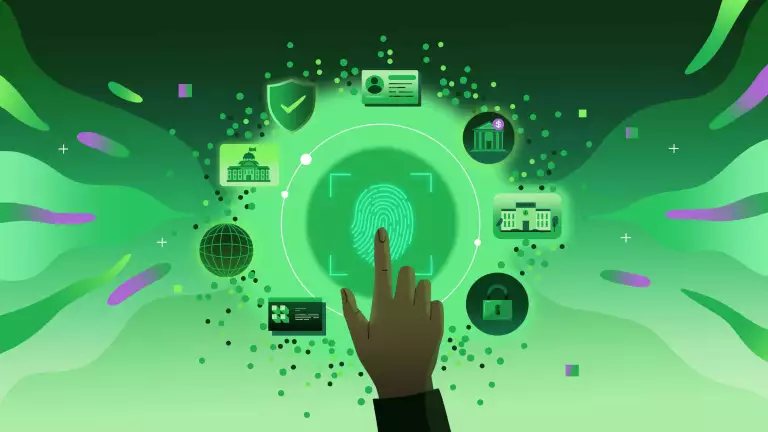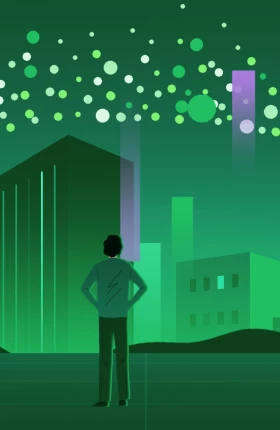This summary article showcases ideas from a recent episode of BCG’s Imagine This... podcast. Alongside Miguel Carrasco , BCG’s global leader for the Center for Digital Government, we explore the future of government services.
BCG’s AI agent Scribe generated this summary—with oversight and editing provided by humans.
Imagine a world where renewing your driver’s license, applying for unemployment benefits, or securing a building permit is as simple as ordering a pizza. Fast, efficient, and seamless. By 2030, this could be our reality, thanks to the digital transformation of government services powered by AI, data, and cutting-edge technology.
In a future where accessing government services feels as user-friendly as interacting with a well-designed app, we can expect a revolution not only in convenience but also in trust, accessibility, and economic efficiency. Here’s a look at how this future might unfold, and what it means for citizens, businesses, and governments.
Current Frustrations
For many of us, the process of interacting with government agencies can be tedious. Whether it’s filling out complex paperwork or navigating various agencies and contacts, the inefficiency is palpable.
Today, even the smallest tasks—like renewing a license or filing taxes—can require re-entering the same information repeatedly, across different platforms and agencies. The current landscape is fragmented.
- People are trying to navigate a complex system of state/provincial, local, and federal/national services.
- Despite efforts to make processes easier—like putting them online or offering one-stop service centers—many individuals still encounter issues such as technical difficulties, forgotten passwords, or missing paperwork.
BCG research suggests that between 60% and 70% of people experience some type of problem when engaging with government services. This presents an immense opportunity for improvement—and that’s where digital transformation steps in.
The Role of AI and Digital Identity
At the heart of this transformation is
AI
and digital identity.
- These technologies have the potential to streamline the government experience, allowing users to interact with services more intuitively. Think about a future where you no longer need to remember logins or passwords. Instead, a secure digital identity contains all the necessary information, allowing you to access services quickly and effortlessly.
- AI-powered virtual assistants could further simplify interactions. Imagine speaking to your device in your native language to explain what service you need, and the system responds in real time, filling out forms, gathering required documents, and guiding you through the process.
- This shift would be a game-changer, particularly for those with lower digital literacy and people with disabilities, making government services more accessible and inclusive.
Seamless Government
One of the most significant transformations could be how
digital government
affects businesses.
- Today, securing building permits or registering a new company can be time-consuming, sometimes taking months or even years. But with digitized services, these processes could move much faster.
- The potential economic impact is enormous. Streamlining these services would not only reduce red tape but also act as an economic stimulus. Every time a business can invest more quickly, hire people faster, or expand its operations without unnecessary delays, the economy benefits.
- Faster approvals, accurate data, and automated systems could drive both productivity and trust in government.
Trust and Privacy: The Digital Identity Dilemma
While the benefits of a unified digital identity are clear, it raises an important question: What happens to privacy?
- Citizens’ comfort with sharing personal data is mixed. Some embrace the convenience of technology, while others are wary of how much control governments—or even private companies—will have over their data.
- It’s crucial to maintain user consent and control in this new digital era. It’s not an all-or-nothing situation. The more individuals trust the systems they are engaging with, the more willing they are to share their information. But that trust must be earned through transparency and robust cybersecurity measures.
Addressing the Digital Divide
Among the challenges governments will need to address: the digital divide.
- Lower-income households often rely more heavily on government services but have less access to digital infrastructure like broadband or devices. If these issues are not tackled, the move toward digitization could inadvertently widen inequalities.
- Freeing up government resources through automation could help solve this problem. By reducing the number of workers handling basic administrative tasks, more resources could be directed toward helping those most in need, providing them with personalized and human-centered support.
What Happens When Systems Fail?
With increasing reliance on digital services, the question of resilience arises. What happens when systems go down, either due to cyberattacks or technical failures?
- The COVID-19 pandemic demonstrated the importance of government infrastructure being prepared for crises.
- Governments need to build redundancy into their digital infrastructure. Safeguarding these systems as critical infrastructure will be paramount to ensure that
technology
doesn’t become a single point of failure.
Opportunities for AI in Crisis Management
Natural disaster recovery could be revolutionized by AI and digital identity systems. For instance, after a hurricane or wildfire, geospatial mapping could be used to identify affected areas. Citizens could receive immediate aid through direct payments into their bank accounts, with no need to provide paperwork or identification. AI could automate the allocation of resources, speeding up recovery and minimizing bureaucratic delays.
The Path Forward for Governments
Governments that want to succeed in this new era need to act now. There are three key steps they must prioritize:
- Investing in robust digital infrastructure
- Enhancing digital literacy
- Building trust through strong security practices
One no-regret move for leaders: engage with the technology to understand both its opportunities and risks.
Miguel Carrasco has deep expertise in topics including digital innovation and service delivery, citizen-centric government, digital identity and trust, and legacy systems modernization. He is an author of BCG’s bi-annual Global Digital Government Benchmarking series.
You can find Imagine This... wherever you get your podcasts.





